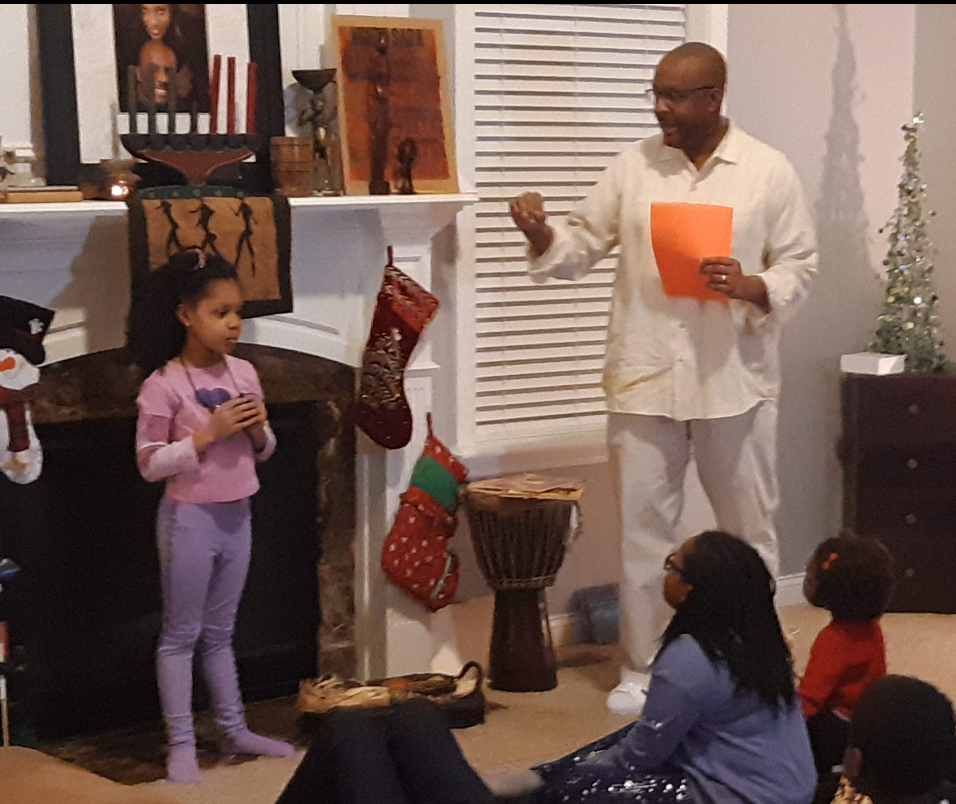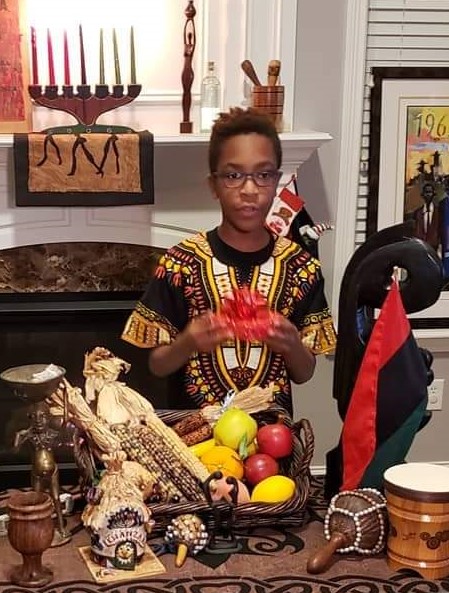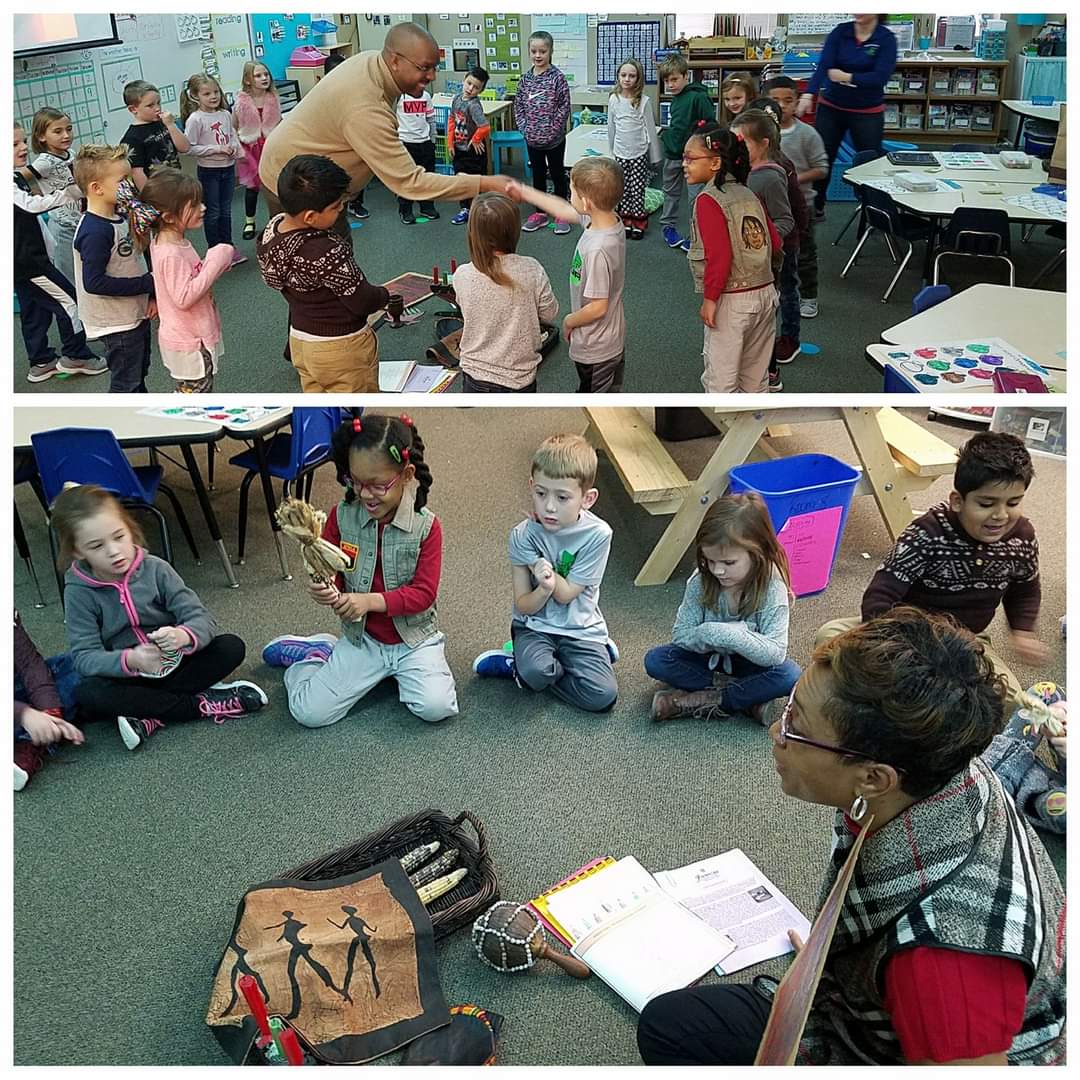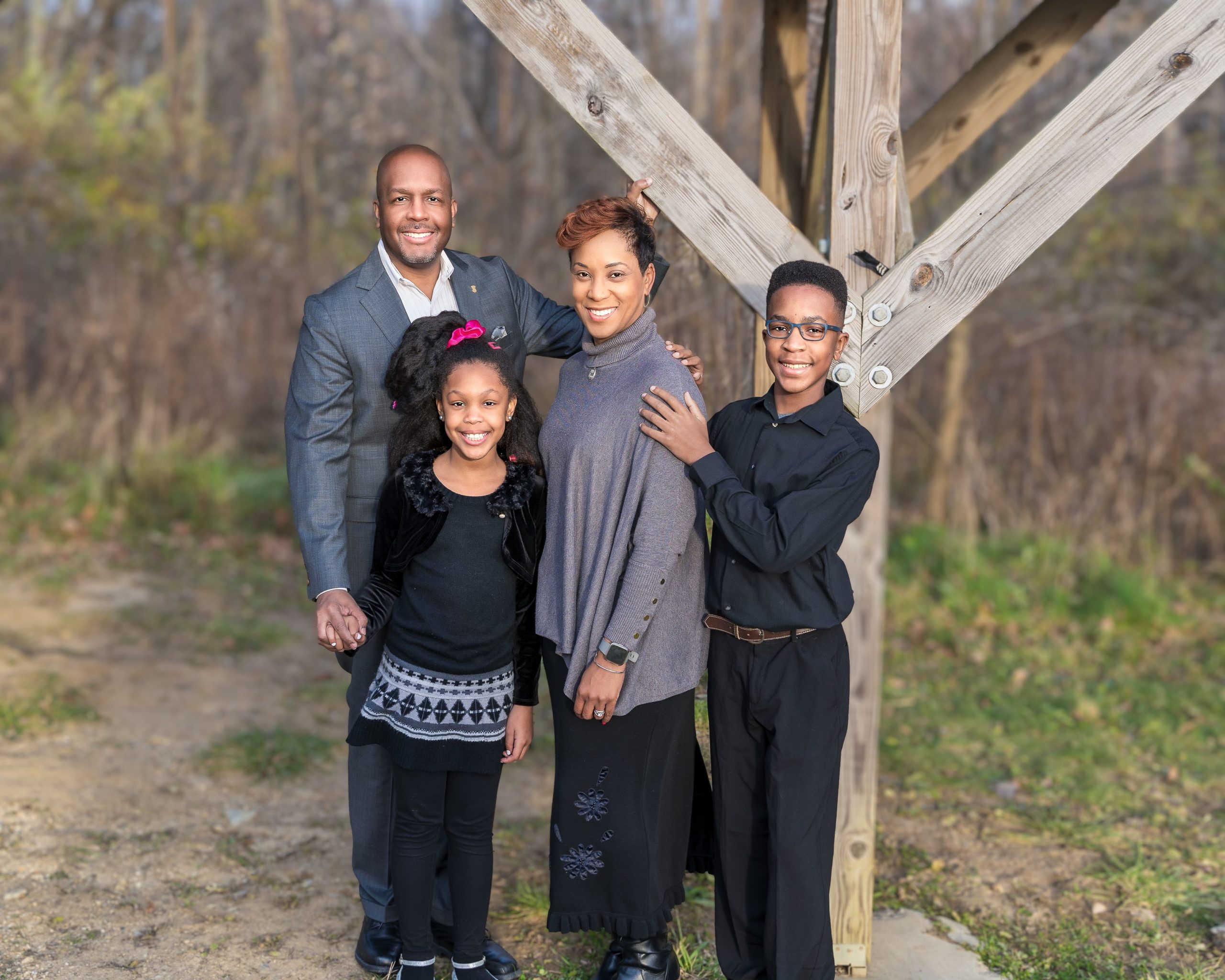Kwanzaa, which means “first fruits,” is an African American and Pan-African holiday that is based on ideas borrowed from an ancient Swahili seven-day-long festival, which is celebrated from December 26 to January 1. The creation of Kwanzaa was birthed from a need to reaffirm and restore our rootedness in African culture, and thus, is an expression of recovery and reconstruction of African culture. The communal celebration serves to strengthen, as well as to provide purpose and direction through the Nguzo Saba (Seven Principles) honored on each of the seven days.

Nguzo Saba
Each day, we greet others with “Habari Gani?” (What’s the news?), and the response is the name of the principle for each specific day of Kwanzaa.
Day One: UMOJA (Unity)
To strive for and maintain unity in the family, community, nation, and race.
Day Two: KUJICHAGULIA (Self-Determination)
To define ourselves, name ourselves, create for ourselves, and speak for ourselves.
Day Three: UJIMA (Collective Work and Responsibility)
To build and maintain our community together and make our brother’s and sister’s problems our problems and to solve them together.
Day Four: UJAMAA (Cooperative Economics)
To build and maintain our own stores, shops, and other businesses and to profit from them together.
Day Five: NIA (Purpose)
To make our collective vocation the building and developing of our community in order to restore our people to their traditional greatness.
Day Six: KUUMBA (Creativity)
To do always as much as we can, in the way we can, in order to leave our community more beautiful and beneficial than we inherited it.
Day Seven: IMANI (Faith)
To believe with all our heart in our people, our parents, our teachers, our leaders, and the righteousness and victory of our struggle.
Symbols of Kwanzaa
A table is spread with a beautiful piece of African cloth. The mkeka (mat) is placed down and all of the other symbols, such as mazao (crops symbolizing the children), kikombe cha umoja (the Unity cup used to pour libation to honor and in remembrance of our ancestors), and the zawadi (gifts for the labor and love parents). The kinara (candle holder) is placed on the mat with the Mishumaa Saba (seven candles) placed inside of the kinara, and each candle is lit for each day of Kwanzaa.
The colors of Kwanzaa are red, black, and green: red is for the struggle of the people (symbolized by three red candles); black is for the people (black candle), and green is for the future and hope that comes from the struggle (three green candles). The black candle is lit first to signify that the people come first, and then, the candles are lit from left to right, as the struggle builds hope for the future.
The bendera (flag) also contains the same three colors: red, black, and green. At the end of each day, we shout “Harambee” (Let’s All Pull Together) seven times while pulling together our fists. On the seventh day, we celebrate the final day of Kwanzaa with a Karamu, which is a special feast that is celebrated with family friends.

Kwanzaa reminds our family that we need to honor our elders and parents, as well as believe in our people, our leaders, our families, and our friends, along with the virtue and importance of our struggle, which should be celebrated throughout the year.


Doctors Dhanfu & Sigrid Elston have lived in Fishers with their two kids for six and a half years. They enjoy fishing on Geist Reservoir, riding their bikes, going on walks, and trying out new restaurants at Fishers District. Their spare time entails them working on their garden and enjoying the fruits of their labor. Their favorite part of Fishers is their church, Eastern Star Church Family & all the activities that are available and easy to access for them as a family!
